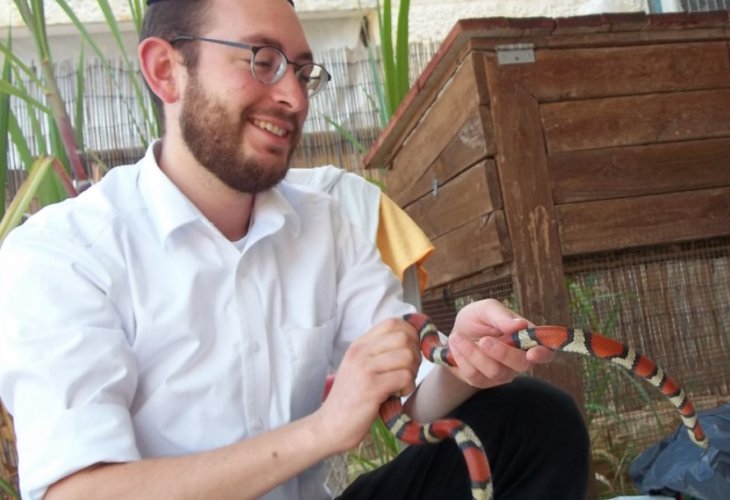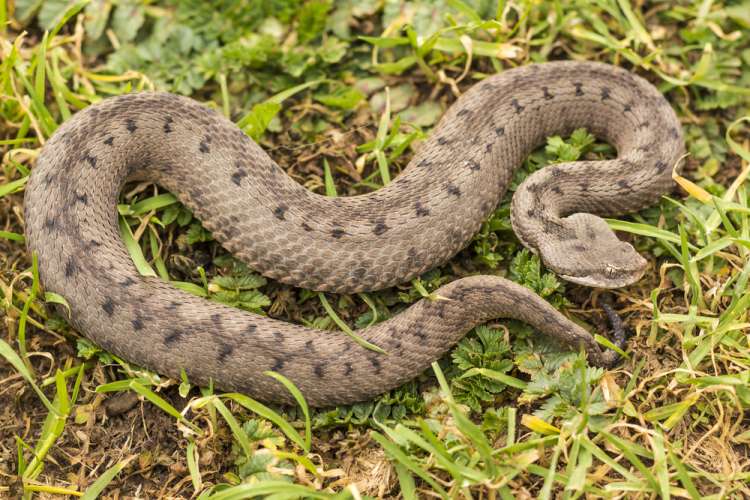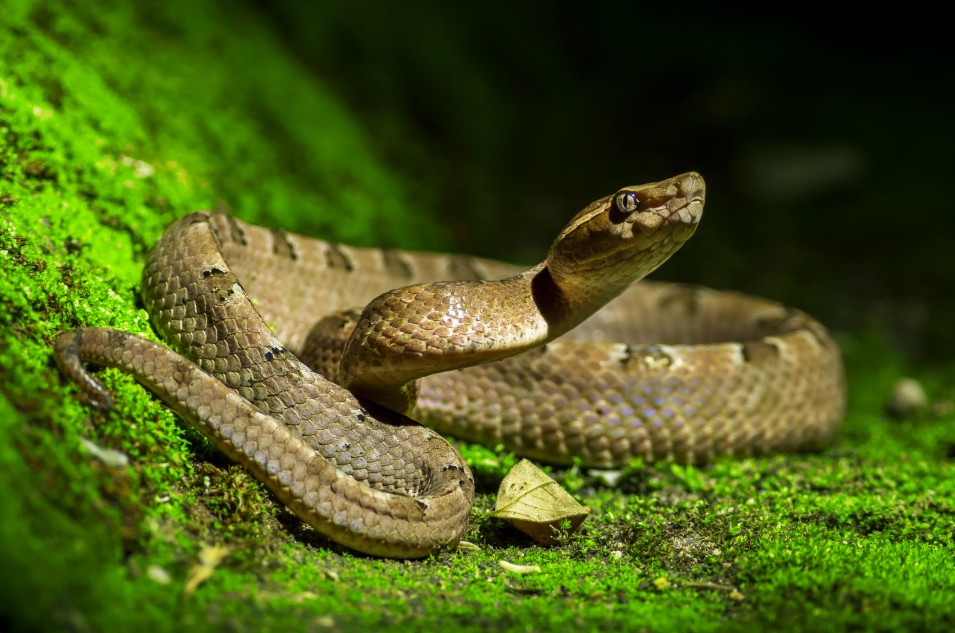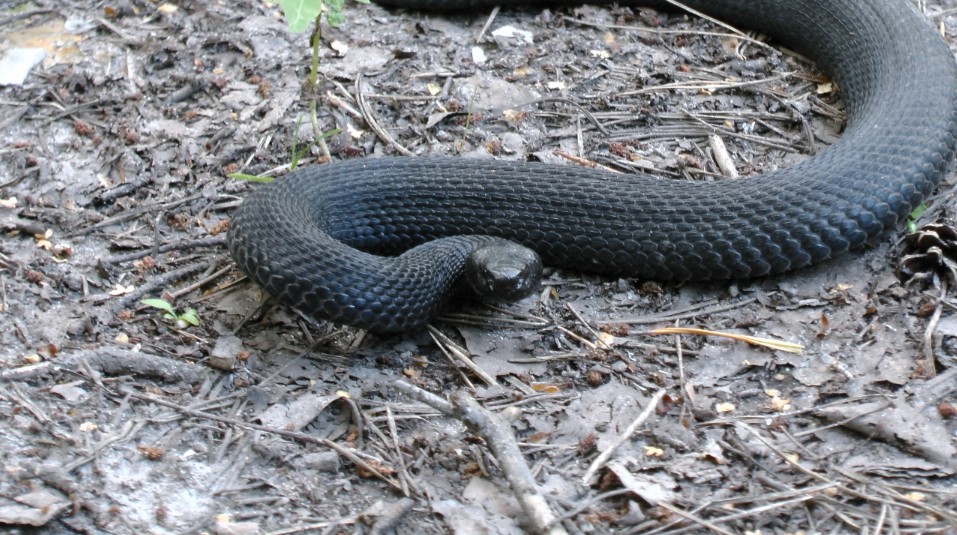Snake Catcher: "If You See a Snake, Don't Run Away"
Encountering a snake can be unsettling. Here are expert tips on how to handle such situations safely.
 Snake catcher Yaakov Stiebel
Snake catcher Yaakov StiebelSummer is here, and the hot weather during the day and the slightly cool nights are bringing snakes out of hiding, making this season their most active.
Just this week, we heard about a yeshiva student who collapsed and lost consciousness during a trip in the south. His friends didn't understand what had happened, as it occurred suddenly without visible cause. It was only after he was taken to the hospital that it was revealed he had been bitten by a snake, which led to heatstroke, followed by fainting and loss of consciousness.
Meanwhile, the student's condition remains serious, and the public is being urged to pray for Rafael Chaim Menachem Mendel ben Leah for a complete recovery. Thus, it's also a good time to learn more about snake activity during this time of year and to finally understand how to avoid them and what to do if faced with one.
 (Photo: Shutterstock)
(Photo: Shutterstock)
"Not Killing Snakes, But Releasing Them"
Yaakov Stiebel, a snake catcher residing in Beitar Illit, has been in this unique profession since he was a child. "My father was a renowned snake catcher, and I simply continue his path alongside my brother Gedalya, who is also in this line of work," he explains. "Since we are both also United Hatzalah responders, there are times when we are called to an emergency only to find out it's a snake bite. At that moment, we start to act in our role as catchers, and on several occasions, we ended up dealing with the capture while treating the victim."
On regular days, Stiebel works in naturopathy, but as summer approaches, he finds himself being called to more and more snake sightings.
Why do we hear so often about snake bites particularly during this period?
"One must understand that snakes are cold-blooded and thus affected by the ambient temperature," Stiebel explains. "When it's cold, they don't move at all, rather, they stay frozen. When it's too hot, they sort of stiffen and may move very little. However, during periods like now, when evening temperatures are pleasant, and sometimes during the day it's warm but not scorching, they often come out from their hiding places. This exposure is why we discover snakes more frequently now."
Stiebel emphasizes that generally, we shouldn't encounter snakes in residential areas. "Snakes are born in the wild, where their mother lays the eggs, and each of them sets out alone, constantly searching for food. During these searches, snakes sometimes end up in residential areas like sidewalks and buildings," he says.
According to him, when snakes are found in populated areas, they are usually not venomous. "The famous venomous snake in Israel – the viper, hardly ever reaches residential areas because it is cumbersome and incapable of climbing stairs or walls. Therefore, we mostly find it in the wild in places like chicken coops, pigeon lofts, and the like. Most of the snakes I catch in buildings and residential areas belong to the colubrid family. They're called this for a reason, as they truly seem angry and intimidating, but they are not venomous and thus not dangerous. Some even feed on vipers, making them beneficial to humans."
What should be our first action when encountering a snake?
Stiebel surprises by stating: "Stay put, don't run or call for help, but maintain eye contact with the snake. Generally, if we do not threaten the snake, it will not harm us, and maintaining eye contact is crucial to track it and prevent it from escaping. Of course, simultaneously, it is vital to contact a snake catcher as soon as possible."
 Photo: Shutterstock)
Photo: Shutterstock)Isn't it dangerous to stay so close to a snake?
"As mentioned, as long as we do not threaten the snake, there is no need to worry. Snakes do not 'jump' on people. On the contrary, when they notice humans, they try to flee. By maintaining a safe distance of about 5 meters from the snakes, we are undoubtedly safe. Snakes can only jump forward about a third of their body length, which means at most about 75 centimeters. Hence, a distance of five meters certainly suffices."
Still, most people are likely to fear and flee the area
"Indeed, many panic and run far away. This complicates catching the snakes, as when we arrive, we might search for hours without finding it. Sometimes people call me and say: 'I saw a snake yesterday' or 'I saw a snake an hour ago,' naturally, in such cases, it's very challenging to find."
How do you protect yourself during snake captures?
"First and foremost, when I arrive at a scene, I always treat the situation as if it involves a venomous snake. Until proven otherwise, I continue to assume so. During capture, I have special gloves against bites and a 'grabber' – a long tong with which to catch the snake, with the hope that I won't need to touch it, keeping a safe distance. Only when there is no choice do I catch it with my hands."
Stiebel stresses that he doesn't kill the snakes but rather ensures to release them back into nature. "I operate with a special permit from the Nature and Parks Authority, which legally prohibits killing the snakes; instead, I must catch and release them. The reason is simple – every snake in nature feeds on other snakes or animals, meaning if we kill or alternatively raise a non-venomous snake, we harm nature and our protection against venomous snakes that might proliferate. Occasionally, people call to proudly inform me, 'We killed a snake!' When I inquire, I find out it's a black colubrid, the best snake that isn't dangerous or venomous and benefits humanity. As noted, killing snakes disrupts nature's balance. Recently in North Jerusalem, there's a noticeable increase in rock hyraxes. It's clear to me that if there were enough snakes there, the phenomenon could have been prevented, but since they've been removed, a new problem emerged."
 Photo: Shutterstock)
Photo: Shutterstock)
Don't Panic, Do Escape
You mentioned snakes prefer the wild, so why do they end up in houses sometimes?
"As I said earlier, the snake searches for food. It primarily feeds on lizards and mice, sometimes even snakes, rats, rock hyraxes, chickens, chicks, and eggs. It searches for this food in the wild, but since it fears humans, it looks for hiding places, like dense, unkempt vegetation, building entrances full of bikes, strollers, and debris, and similar spots. Therefore, if you possess such areas, the recommendation is to keep them as tidy and clean as possible. It is advisable to tidy up the garden's vegetation and avoid piles of overgrowth and debris. There are also cases where snakes enter homes without any apparent reason. For example, once I was called to catch a snake that reached the third floor of an apartment building. To this day, it isn't clear how it managed to get there, with no other option but to climb the building's wall."
There are exceptional cases of his visits as well. "One day I was called to a private house, fearing a snake inside. After gathering details, it turned out no one actually saw the snake, and it might just be a cat. Only when I arrived did I discover the big surprise – not a snake nor a cat awaited, but an owl that somehow got trapped inside and couldn't get out. It was undoubtedly an unexpected surprise."
Regarding outings in the wild, Stiebel emphasizes that the most important instruction is not to walk in sandals, not to step on places where you can't see what's beneath, and not to stick your hands in holes or crevices. "If we follow these rules and don't try to be heroes, chances are even if there is a snake in our area, it will not bother us," he assures.
Although we all hope these guidelines won't apply to us practically, Stiebel claims that snakes are discovered much more frequently than we assume. "There are periods when I am summoned several times a week to catch snakes. I am not trying to threaten or scare; generally, it turns out the snake isn't venomous or dangerous, but there definitely are cases involving life-threatening dangers, so it's important to know how to behave and defend oneself."

